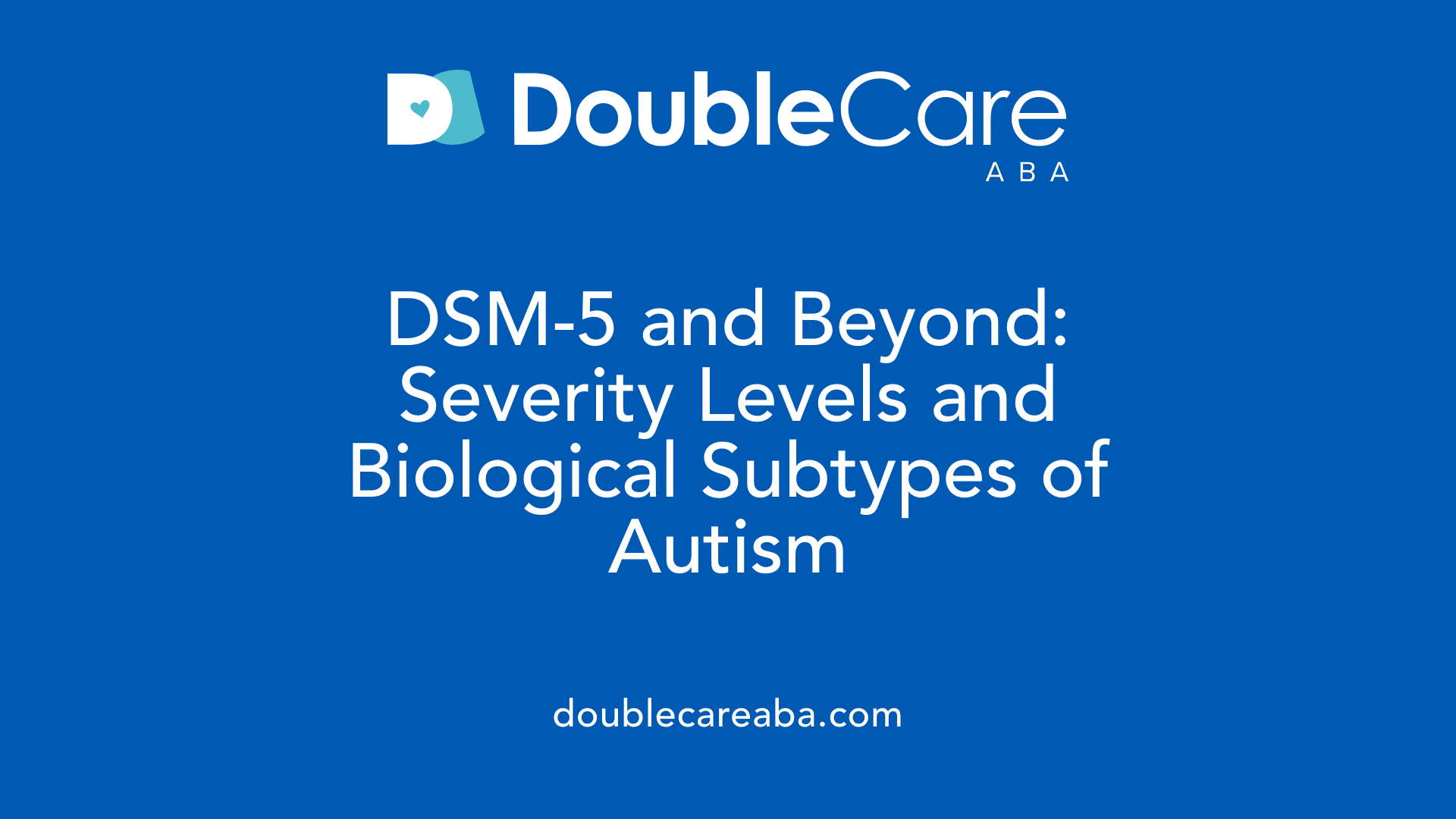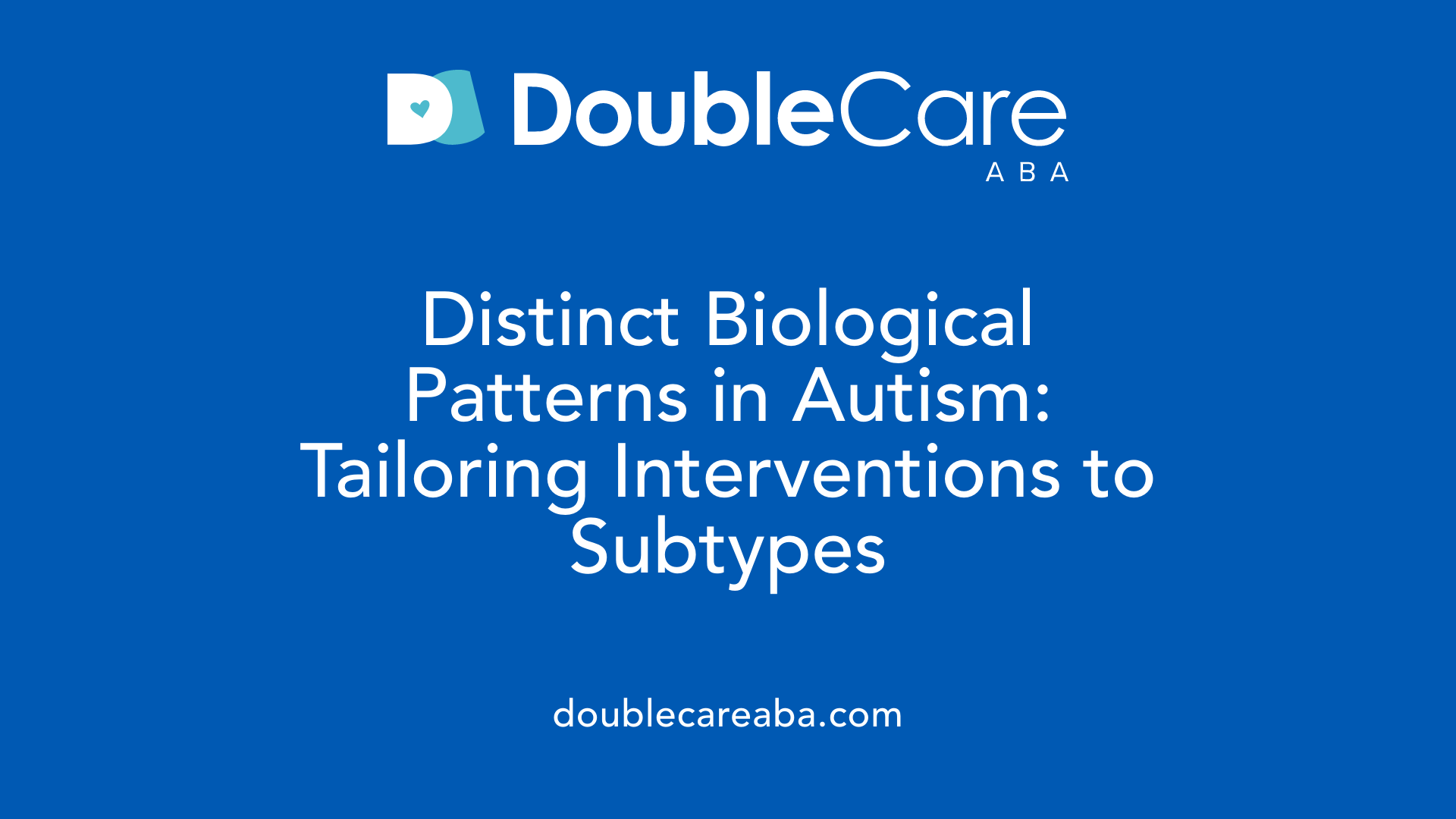Exploring the Diversity Within Autism Spectrum Disorder
Autism Spectrum Disorder (ASD) is a complex neurodevelopmental condition affecting social communication, behavior, and learning. Recognized as a spectrum, ASD encompasses a wide array of presentations, severities, and underlying biological mechanisms. This article delves into the various types, classifications, symptoms, and recent research developments to provide a comprehensive understanding of autism in all its diversity.
Main Types and Classifications of Autism Spectrum Disorder

What are the main types and classifications of autism spectrum disorder?
Autism spectrum disorder (ASD) is a broad neurodevelopmental condition that affects social interaction, communication, and behavior. It is called a spectrum because of the wide variation in how symptoms appear and how severe they can be. Over time, our understanding and classification of autism have changed significantly.
Historical categorization of autism disorders relied on specific diagnoses such as autistic disorder, Asperger’s syndrome, pervasive developmental disorder not otherwise specified (PDD-NOS), childhood disintegrative disorder, and Rett syndrome. These terms described different levels of severity and characteristics, often based on features like language development, cognitive abilities, and behavioral patterns. For instance, Asperger’s syndrome was seen as a milder form, with individuals typically having good language skills and above-average intelligence, but difficulties in social interaction. Autistic disorder involved more intense symptoms, including significant language delays and social deficits. Childhood disintegrative disorder was a rare, severe condition involving normal early development followed by regression. Rett syndrome, although once grouped with ASD traits due to some overlapping features, is now recognized as a distinct genetic disorder mainly affecting girls.
Evolution to a spectrum-based classification took shape with the publication of diagnostic manuals like the DSM-5. In 2013, the DSM-5 replaced the multiple subcategories with a single diagnosis of autism spectrum disorder, emphasizing the need to recognize the diversity of presentations. This change was based on clinical and research evidence suggesting that the distinctions between types like Asperger’s and PDD-NOS were less clear-cut than once thought.
The DSM-5 also introduced severity levels to better describe individual support needs:
| Level | Description | Support Needed | Typical Behaviors |
|---|---|---|---|
| Level 1 | Requiring support | Minimal support | Noticeable social impairments, some inflexibility, mild challenges |
| Level 2 | Requiring substantial support | Moderate support | Marked deficits in social communication, often restricted behaviors |
| Level 3 | Requiring very substantial support | Extensive support | Severe deficits, limited communication, high support needs |
In addition to severity levels, autism is now characterized by factors such as intelligence, language skills, and co-occurring conditions. For example, some individuals on the spectrum are non-verbal, while others may have high cognitive abilities.
Biological and genetic subtypes of ASD offer another layer of classification. Research, including studies by institutions like Princeton University and the Simons Foundation, supports categorizing autism into distinct biological profiles, such as:
- Social and behavioral challenges: Individuals with core autism traits, typical developmental milestones, but often with associated conditions like ADHD.
- Mixed ASD with developmental delay: Those who reach developmental milestones later but lack psychiatric comorbidities.
- Moderate challenges: Less intense autism behaviors, typically developing on time.
- Broadly affected: Extensive difficulties, including developmental delays and mental health issues.
These subtypes are linked to different genetic mutations and developmental pathways. For example, some genetic mutations appear later in childhood, implying that biological mechanisms can emerge post-birth. Such insights are refining our understanding of ASD and paving the way for personalized interventions.
Overall, the classification of autism has transitioned from rigid categories to a nuanced spectrum approach. This framework captures the diversity in how autism manifests and informs tailored support and research into underlying causes.
Symptoms and Characteristics of Autism Subtypes
What are the characteristics and symptoms associated with different types of autism?
Autism spectrum disorder (ASD) includes a variety of subtypes, each presenting unique features and challenges. Understanding these differences is essential for accurate diagnosis and effective support.
Classic autism, also known as autistic disorder or Kanner’s syndrome, is characterized by marked difficulties in social interaction, communication delays, and repetitive behaviors. Children with classic autism often show significant language delays, struggle with understanding social cues, and may have intense, focused interests. Symptoms typically appear before age 3, and affected children might exhibit unusual sensory responses and self-stimulatory behaviors like hand-flapping or rocking.
Asperger’s syndrome, now classified under ASD as level 1, was once distinguished by no significant language or cognitive delays. Individuals with Asperger’s usually have average or above-average intelligence and good verbal skills. However, they experience notable difficulties in social understanding, managing social nuances, and forming typical peer relationships. They may also have intense interests and routines but function well daily, often excelling academically in certain areas.
Pervasive Developmental Disorder-Not Otherwise Specified (PDD-NOS), sometimes called atypical autism, manifests with milder or atypical symptoms that do not meet full criteria for other autism subtypes. Individuals might display social communication challenges and developmental delays but to a lesser degree. This diagnosis often applies to children who show some but not all hallmark behaviors of autism.
Childhood disintegrative disorder (CDD) is a rare and severe form where children develop normally for the first few years but then experience a significant regression. Typical signs include loss of language skills, social abilities, and motor functions, often accompanied by seizures. CDD tends to impact boys more frequently and involves severe social and communication impairments, with additional neurological issues.
Recent research has identified four different biological subtypes of autism, helping to clarify the diversity within the spectrum:
| Subtype | Behavioral Traits | Developmental Profile | Genetic Links |
|---|---|---|---|
| Social and Behavioral Challenges | Display core autism traits but meet milestones at typical pace; sometimes with co-occurring ADHD, anxiety | Reach developmental milestones on time; may have additional mental health issues | Less likely to carry damaging de novo mutations |
| Moderately Affected | Exhibit autism behaviors less intensely, reach milestones on time, no significant psychiatric conditions | Show milder behaviors, often less impairing | Tend to have inherited rare genetic variants |
| Mixed with Developmental Delay | Reach developmental milestones later, minimal psychiatric issues | Greater developmental delays; fewer psychiatric comorbidities | More likely to possess rare inherited variants |
| Broadly Affected | Severe delays across development, with psychiatric conditions | Extensive challenges, often needing substantial support | Highest proportion with damaging de novo mutations |
Understanding this spectrum of symptoms allows clinicians and educators to tailor interventions to each individual’s needs. For example, while some may require significant daily support, others might excel in communication and cognitive areas but struggle with social interactions.
Behavioral Diversities Within the Spectrum
Autism manifests a broad range of behaviors. Some individuals are non-verbal, relying on alternative communication methods, while others are highly verbal but may struggle with social reciprocity.
Repetitive behaviors can include lining up toys, echoing phrases, or intense fixation on particular objects or routines. Sensory sensitivities might lead some to be overly responsive or under-responsive to stimuli like sounds, lights, or textures.
Other common features include delayed language, motor skill challenges, hyperactivity, and sometimes co-occurring conditions such as seizures or gastrointestinal issues.
Recognizing these diversities highlights the importance of personalized approaches in therapy, education, and support systems, ensuring each individual’s strengths and challenges are addressed effectively.
Autism Severity Levels According to DSM-5
Overview of severity levels in ASD
The DSM-5 classifies autism spectrum disorder (ASD) into three distinct levels based on the amount of support an individual requires to function effectively in daily life. These levels help clinicians, educators, and caregivers understand the specific needs of each person on the spectrum, facilitating tailored intervention plans. The categorization considers social communication challenges, behavioral patterns, and the extent to which behaviors interfere with functioning.
Description of Level 1: requiring support
Level 1 autism involves noticeable impairments in social communication skills. Individuals at this level often have difficulty initiating social interactions and may show inflexibility in routines and behaviors. While they can usually function independently with some support, these challenges can cause significant difficulties in social situations. Common signs include some trouble understanding social cues, mildly restricted interests, or repetitive behaviors that may sometimes interfere with daily life.
The support needed at Level 1 typically involves strategies to improve communication, social skills, and flexibility. Interventions might include social skills training, behavioral therapy, and accommodations that promote independence in educational or workplace settings. Despite their challenges, many individuals at this level have average or above-average intelligence and can participate in mainstream education or employment with appropriate support.
Description of Level 2: requiring substantial support
Level 2 autism presents with more pronounced difficulties in social and behavioral domains. Individuals often show marked deficits in social communication, such as limited initiation of interactions, difficulty understanding social cues, and restricted interests that are intense and inflexible. These challenges frequently lead to social withdrawal or misunderstandings.
Repetitive behaviors and routines are more prominent at this level and tend to significantly interfere with daily functioning. The behaviors may include frequent hand-flapping, insistence on sameness, or intense focus on specific interests.
Support at Level 2 involves substantial interventions, including structured behavioral therapies, communication assistance (like speech therapy), and social skills development programs. Assistance may be needed in various environments, including education, work, and social settings, to help improve independence and quality of life.
Description of Level 3: requiring very substantial support
Level 3 autism characterizes individuals with severe social and communication impairments. These individuals often exhibit minimal responses to social overtures, very limited or no verbal communication, and behaviors that profoundly interfere with everyday activities. They may demonstrate high levels of repetitive behaviors, such as rocking or self-injury, that are difficult to manage.
The support needs are extensive, often requiring round-the-clock supervision. These individuals may depend heavily on caregivers for daily tasks, behavioral management, and safety. Typical signs include absence of meaningful social interaction, very limited speech, and an inability to adapt to changes.
Interventions are highly structured and intensive, sometimes encompassing specialized behavioral programs, sensory integration therapies, and medical management for co-occurring conditions. The primary goal at this level is to maximize comfort, safety, and functionality within supported living environments.
| Severity Level | Description | Support Needs | Typical Signs |
|---|---|---|---|
| Level 1 | Noticeable impairments requiring support | Behavioral strategies, social skills training, facilitation of independence | Mild social difficulties, some inflexibility |
| Level 2 | Marked deficits requiring substantial support | Structured therapies, communication aid, behavioral interventions | Frequent repetitive behaviors, limited social initiation |
| Level 3 | Severe impairments needing very substantial support | Intensive, often 24/7 support, specialized interventions | Minimal social response, limited or no verbal communication |
These severity levels help tailor interventions to promote better social participation, communication, and overall well-being. As support needs increase from Level 1 to Level 3, the intensity and scope of services also expand, aiming to meet each individual's unique challenges and strengths.
More information and support
Individuals with ASD present a wide range of abilities and challenges. The support model recognizes this diversity and cultures intervention strategies accordingly. Early diagnosis and continuous assessment are vital to determine the appropriate level of support and intervention.
For further details, searches such as "DSM-5 autism severity levels," "autism spectrum disorder levels," "support needs in autism," and "autism classification criteria" can provide additional insights into how these levels are applied in clinical and educational contexts.
Diagnostic Approaches and Criteria for Autism Spectrum Disorder

What are the diagnostic criteria and methods used to classify different forms of autism?
Diagnosing autism spectrum disorder (ASD) involves a comprehensive evaluation process centered around recognized clinical criteria, primarily outlined in the DSM-5. The main diagnostic features include persistent challenges in social communication and interaction across various contexts. These difficulties encompass deficits in social-emotional reciprocity, such as trouble initiating or responding to social interactions, as well as impairments in using and interpreting nonverbal communication like gestures and facial expressions. Additionally, establishing the presence of at least two restricted and repetitive behaviors is essential. These might include stereotyped movements like hand-flapping or rocking, insistence on sameness, or heightened sensitivity to sensory stimuli.
Symptoms are usually observable in early childhood, often before age 3, but some individuals, especially those with milder presentations, may not show clear signs until later in development. The diagnosis process relies heavily on behavioral assessments and structured observation tools.
To accurately classify different forms within the spectrum, clinicians utilize several standardized assessments, notably the Autism Diagnostic Observation Schedule (ADOS) and the Autism Diagnostic Interview-Revised (ADI-R). These tools help detail behavioral patterns, communication skills, social engagement, and repetitive behaviors.
Since there are no definitive biological markers for autism currently, the classification into specific autism types or severity levels depends on behavioral analysis and developmental history. The DSM-5 incorporates severity levels—from Level 1 (requiring support) to Level 3 (requiring very substantial support)—to describe the extent of support needed for each individual.
Overall, diagnosis involves a combination of detailed caregiver interviews, clinical observations, and standardized assessments. This comprehensive approach ensures that clinicians accurately identify the presence of ASD, understand its severity, and tailor support strategies accordingly.
How do behavioral assessment tools support diagnosis?
Behavioral assessment tools like ADOS and ADI-R are essential in the diagnostic process. They provide structured frameworks for observing and quantifying social, communicative, and behavioral patterns.
| Assessment Tool | Purpose | Key Features | Role in Diagnosis |
|---|---|---|---|
| ADOS (Autism Diagnostic Observation Schedule) | Direct observation of behaviors | Interactive activities to elicit social and communication behaviors | Confirms clinical impressions, measures severity |
| ADI-R (Autism Diagnostic Interview-Revised) | Caregiver interview | Questions about early development, communication, and behavior | Gathers developmental history, supports differential diagnosis |
These tools help distinguish ASD from other developmental or behavioral concerns and aid in grading the severity for personalized intervention planning.
Why is developmental history important?
A thorough developmental history gives context to behaviors observed during assessment. It helps identify early signs of autism, such as delays in speech, social smiling, or engagement with others. Caregiver reports provide insights into milestones, regression, and patterns of behavior over time, which are crucial for an accurate diagnosis.
Summarizing diagnostic classification
| Aspect | Details | Significance |
|---|---|---|
| Criteria | Persistent deficits in social communication, restricted behaviors | Foundation for diagnosis |
| Assessment tools | ADOS, ADI-R, developmental history | Behavioral quantification, developmental context |
| Severity Levels | Level 1 (requiring support), Level 2 (substantial support), Level 3 (very substantial support) | Support planning, personalized care |
Understanding these criteria and methods ensures clinicians can accurately diagnose and classify autism, facilitating early intervention and tailored support plans.
Behavioral and Spectrum Variations in Autism
How do autism spectrum variations manifest in behavior across individuals?
Autism spectrum disorder (ASD) is characterized by a broad range of behaviors, symptoms, and support needs, which can significantly differ from person to person. Some individuals experience mild challenges, while others face more severe difficulties, demonstrating the wide variability within the spectrum.
One common aspect of autism is the presence of repetitive behaviors and routines. Many autistic individuals engage in repetitive movements such as hand-flapping, rocking, spinning objects, or echolalia (repeating words or phrases). These actions often increase when the person feels upset, anxious, or overwhelmed and serve as a way to self-soothe or manage their environment.
Sensory sensitivities are also prevalent. Many individuals react unusually to sounds, lights, textures, or smells—either seeking out sensory stimuli or avoiding them. For example, some may cover their ears to block out noise or become distressed by certain textures or bright lights. These reactions can lead to unusual responses, such as withdrawal, meltdown, or heightened alertness.
Social and communication challenges form a core component of ASD. Difficulties with eye contact, understanding facial expressions, or responding to their name by typical developmental ages are common signs. Many have trouble engaging in reciprocal conversations, sharing interests, or understanding social cues, which can affect their ability to form peer relationships.
In addition to behaviors, individuals exhibit a strong preference for routines and repetitive activities. Changes in routines can cause distress, leading to behavioral outbursts. They may also have intense interests in specific topics or objects, spending extended periods focused on them.
Given the diversity of behaviors, support and interventions are tailored to each person’s needs. Some may need significant assistance with daily activities, while others may function independently. Developmental progress, sensory sensitivities, and severity of deficits influence how these behaviors present and change over time.
Why do these behaviors vary so much from person to person?
The differences in behaviors across individuals stem from variations in the severity of symptoms, the presence of co-occurring conditions like ADHD or anxiety, and individual developmental trajectories. Researchers have identified that multiple biological and genetic factors contribute to this diversity.
Understanding this spectrum nature is vital for providing personalized support. No two autistic people are exactly alike, which underscores the importance of early assessment and intervention tailored to their unique profile. Recognizing and respecting these individual differences can help improve quality of life for those on the spectrum.
| Aspect | Common Behaviors/Traits | Additional Notes |
|---|---|---|
| Repetitive behaviors | Hand-flapping, rocking, spinning, echolalia | Increase during stress or anxiety |
| Sensory sensitivities | Overreaction or underreaction to sounds, lights, textures | Can cause withdrawal or meltdowns |
| Social and communication challenges | Poor eye contact, delayed response to name | Hinders peer interaction, social understanding |
| Routines and interests | Insistence on sameness, focused interests | Changes can provoke distress |
| Behavioral variability | Mild to severe presentations | Depend on individual factors and support systems |
Supporting Individual Differences
Recognizing the wide range of presentations in ASD fosters better support strategies. Interventions might include behavioral therapies, sensory integration techniques, speech and social skills training, or a combination, all customized for the individual's profile.
Ongoing research continues to unravel how genetic mutations and brain development influence behavioral differences. These insights facilitate the development of precision approaches, ensuring that each person on the spectrum receives the most effective support for their unique needs.
Biological and Clinical Subtypes of Autism

Are there biological or clinical subtypes of autism?
Recent scientific research confirms that autism spectrum disorder (ASD) is not just one uniform condition but a collection of diverse subtypes, each with unique genetic, neurological, and behavioral features. Instead of a single diagnosis, clinicians now recognize multiple subgroups within the spectrum, which helps in tailoring more effective interventions.
A significant large-scale study analyzing data from over 5,000 individuals with autism identified four primary biological and behavioral subtypes:
| Subtype | Characteristics | Developmental Features | Common Co-occurring Conditions |
|---|---|---|---|
| Social and Behavioral Challenges | Exhibits core autism traits | Reaches developmental milestones typically | Often co-occurs with ADHD, anxiety, depression, OCD |
| Mixed ASD with Developmental Delay | Show increased delays | Reaches milestones later than typical | Usually without significant psychiatric comorbidities |
| Moderate Challenges | Exhibits less intense core behaviors | Develops on a typical timeline | Usually no additional psychiatric diagnoses |
| Broadly Affected | Extensive developmental and psychiatric issues | Significant delays and challenges | Higher occurrence of seizures and physical health issues |
These subtypes are distinguished by differences in genetic mutations, brain connectivity patterns, severity of symptoms, and the presence of other health conditions. For instance, some groups have common genetic mutations (damaging de novo mutations), while others carry rare inherited variants, suggesting varied biological processes at play.
Further research indicates that these distinct subgroups activate different genes at various stages of development. Some genetic mutations affect brain function later in childhood, suggesting that biological mechanisms behind autism may emerge post-birth, highlighting the importance of early detection and intervention.
Understanding these biological distinctions is crucial for advancing diagnosis precision and developing personalized treatment plans. By identifying specific genetic and neurological profiles, clinicians can better predict developmental trajectories and tailor therapies to the needs of each individual.
Implications for diagnosis and personalized treatment
The recognition of multiple ASD subtypes transforms clinical approaches by promoting more nuanced diagnoses that go beyond behavioral observation alone. Diagnostic tools now increasingly incorporate genetic testing, neuroimaging, and developmental history to parse out the underlying biological differences.
Personalized medicine in autism aims to develop targeted therapies based on a person's specific genetic and neurological profile. For example, individuals with certain genetic mutations might benefit from specific pharmacological treatments or specialized behavioral interventions.
This biological stratification also guides research efforts aimed at understanding the origins of autism at a cellular and genetic level. Eventually, this can lead to early biological markers predicting autism risk, enabling preemptive interventions.
In summary, advances in genetic and neurological research reveal that autism comprises multiple subtypes, each with specific biological pathways. Appreciating this diversity is vital for advancing diagnosis, customizing treatment, and improving outcomes for all individuals on the spectrum.
Evolving Understanding and Resources for Autism
How has understanding of autism spectrum disorder evolved, and what resources are available for more information?
Our knowledge about autism spectrum disorder (ASD) has grown substantially over recent decades. Early classifications categorized conditions like autistic disorder, Asperger’s syndrome, and PDD-NOS separately, but in 2013, the DSM-5 adopted a spectrum approach. Today, autism is recognized as a broad neurodevelopmental condition with varying severity levels and presentations. This shift allows for more personalized assessment and support.
Extensive research by leading federal agencies—such as the Centers for Disease Control and Prevention (CDC), National Institutes of Health (NIH), National Institute of Environmental Health Sciences (NIEHS), and the National Institute of Mental Health (NIMH)—has been fundamental in this progress. These research efforts focus on genetic factors, brain development, environmental influences, and early detection strategies. They have pushed forward our understanding of autism’s biological bases, risk factors, and diverse manifestations.
Resources developed from this research are plentiful and accessible. The CDC’s "Learn The Signs. Act Early." program provides developmental screening tools, educational materials, and guidance for parents and caregivers. The NIMH offers extensive scientific publications and updates on ongoing studies, helping to disseminate critical findings related to diagnosis, intervention, and support.
For individuals and families seeking information, reputable sources include MedlinePlus from the National Library of Medicine, which offers easy-to-understand summaries, and organizations like the Autism Research Institute. These sources compile research findings, provide guidance on early signs, and highlight available therapies and intervention programs.
Websites and publications from federal agencies serve as trustworthy points of reference for clinicians, educators, and families. They emphasize the importance of early diagnosis—preferably by age 2 or 3—to enable timely intervention, which can greatly improve communication, social skills, and overall quality of life.
In addition, ongoing research aims to identify specific genetic and neural mechanisms underlying various autism subtypes. This has led to the identification of distinct biological and clinical subgroups, as seen in large studies by Princeton University and the Simons Foundation. These insights support the development of personalized therapies and better support tailored to each individual’s needs.
To stay informed about the latest findings and resources, individuals are encouraged to consult websites such as the National Autism Association, Autism Society, and the aforementioned federal agencies. These platforms also provide updates on new screening tools, intervention strategies, lifespan support programs, and mental health resources tailored for autistic individuals.
In summary, understanding of autism spectrum disorder continues to evolve, driven by robust research and dedicated organizations. The development of accessible, evidence-based resources ensures that families, educators, and healthcare providers are better equipped to support individuals with autism throughout their lives.
Looking Ahead: The Future of Autism Understanding and Support
As our understanding of autism spectrum disorder continues to grow, so does our ability to tailor interventions, support services, and research initiatives to meet individual needs. Recognizing the diverse types and biological subtypes of autism enhances diagnosis accuracy and fosters personalized approaches that can significantly improve quality of life. Ongoing research endeavors and the expansion of resources offer hope for better outcomes, early detection, and comprehensive lifelong support for autistic individuals and their families. Embracing the spectrum in all its diversity is key to fostering an inclusive and supportive society.
References
- What Are the Types of Autism Spectrum Disorders? - WebMD
- What Are the 5 Different Types of Autism? - Spectrum of Hope
- Autism spectrum disorder - Symptoms and causes - Mayo Clinic
- ASD levels of severity - Autism Speaks
- Autism - Wikipedia
- Major autism study uncovers biologically distinct subtypes, paving ...
- What Are the 5 Types of Autism? - Integrity, Inc.
- Autism Spectrum Disorder - National Institute of Mental Health (NIMH)
- Types of Autism Explained
- Autism spectrum disorder (ASD)














